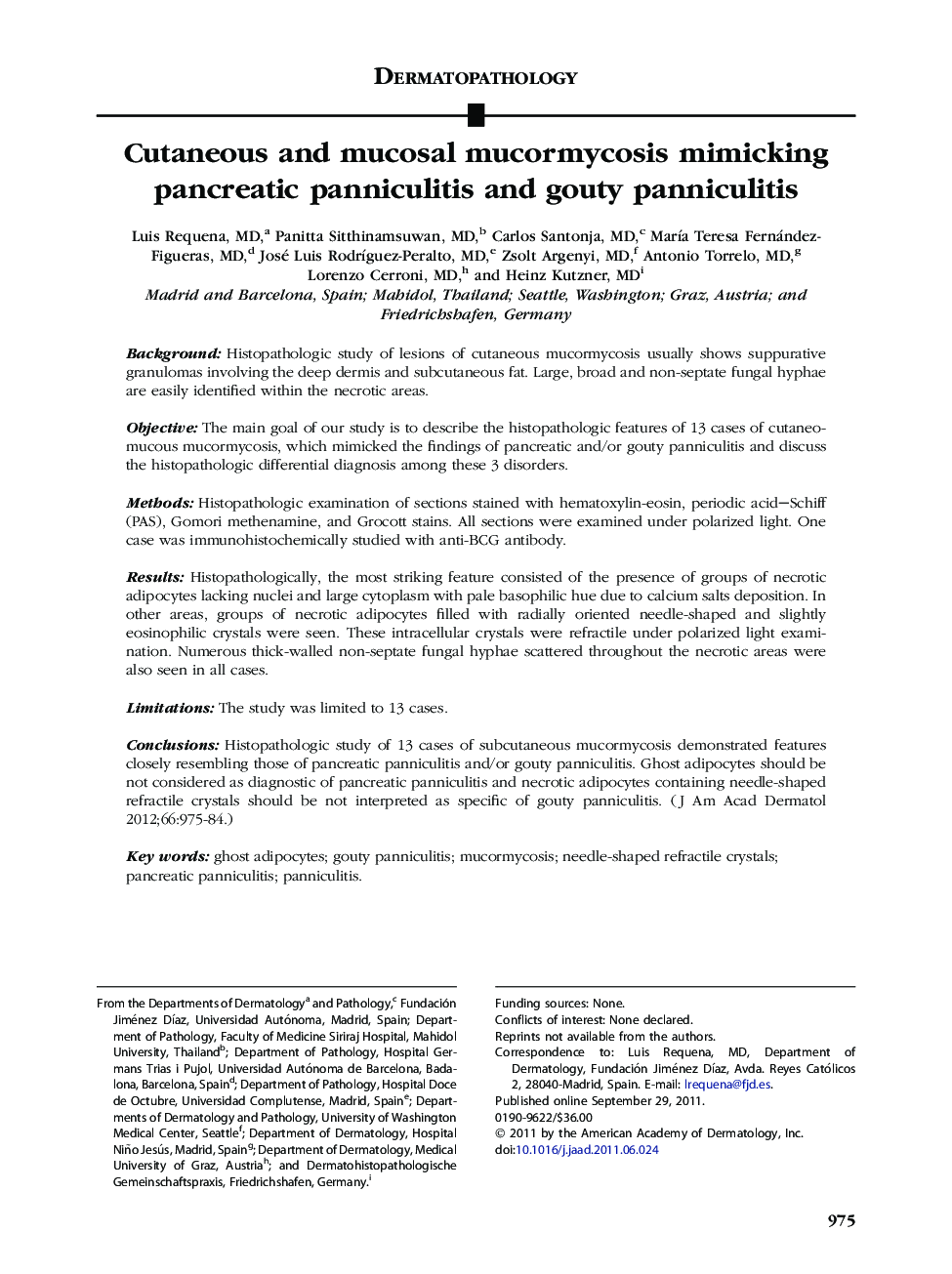| Article ID | Journal | Published Year | Pages | File Type |
|---|---|---|---|---|
| 3207011 | Journal of the American Academy of Dermatology | 2012 | 10 Pages |
BackgroundHistopathologic study of lesions of cutaneous mucormycosis usually shows suppurative granulomas involving the deep dermis and subcutaneous fat. Large, broad and non-septate fungal hyphae are easily identified within the necrotic areas.ObjectiveThe main goal of our study is to describe the histopathologic features of 13 cases of cutaneo-mucous mucormycosis, which mimicked the findings of pancreatic and/or gouty panniculitis and discuss the histopathologic differential diagnosis among these 3 disorders.MethodsHistopathologic examination of sections stained with hematoxylin-eosin, periodic acid–Schiff (PAS), Gomori methenamine, and Grocott stains. All sections were examined under polarized light. One case was immunohistochemically studied with anti-BCG antibody.ResultsHistopathologically, the most striking feature consisted of the presence of groups of necrotic adipocytes lacking nuclei and large cytoplasm with pale basophilic hue due to calcium salts deposition. In other areas, groups of necrotic adipocytes filled with radially oriented needle-shaped and slightly eosinophilic crystals were seen. These intracellular crystals were refractile under polarized light examination. Numerous thick-walled non-septate fungal hyphae scattered throughout the necrotic areas were also seen in all cases.LimitationsThe study was limited to 13 cases.ConclusionsHistopathologic study of 13 cases of subcutaneous mucormycosis demonstrated features closely resembling those of pancreatic panniculitis and/or gouty panniculitis. Ghost adipocytes should be not considered as diagnostic of pancreatic panniculitis and necrotic adipocytes containing needle-shaped refractile crystals should be not interpreted as specific of gouty panniculitis.
